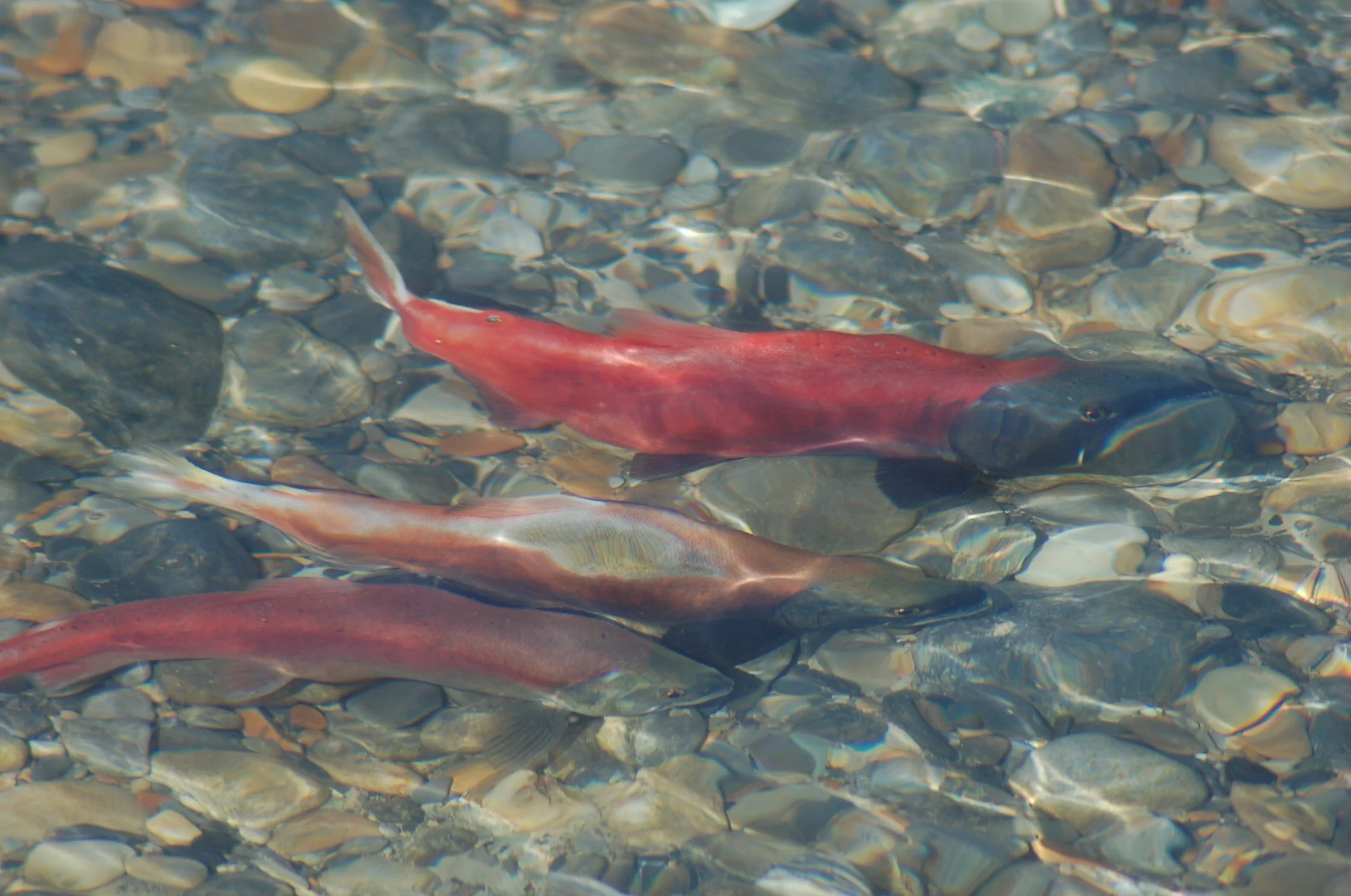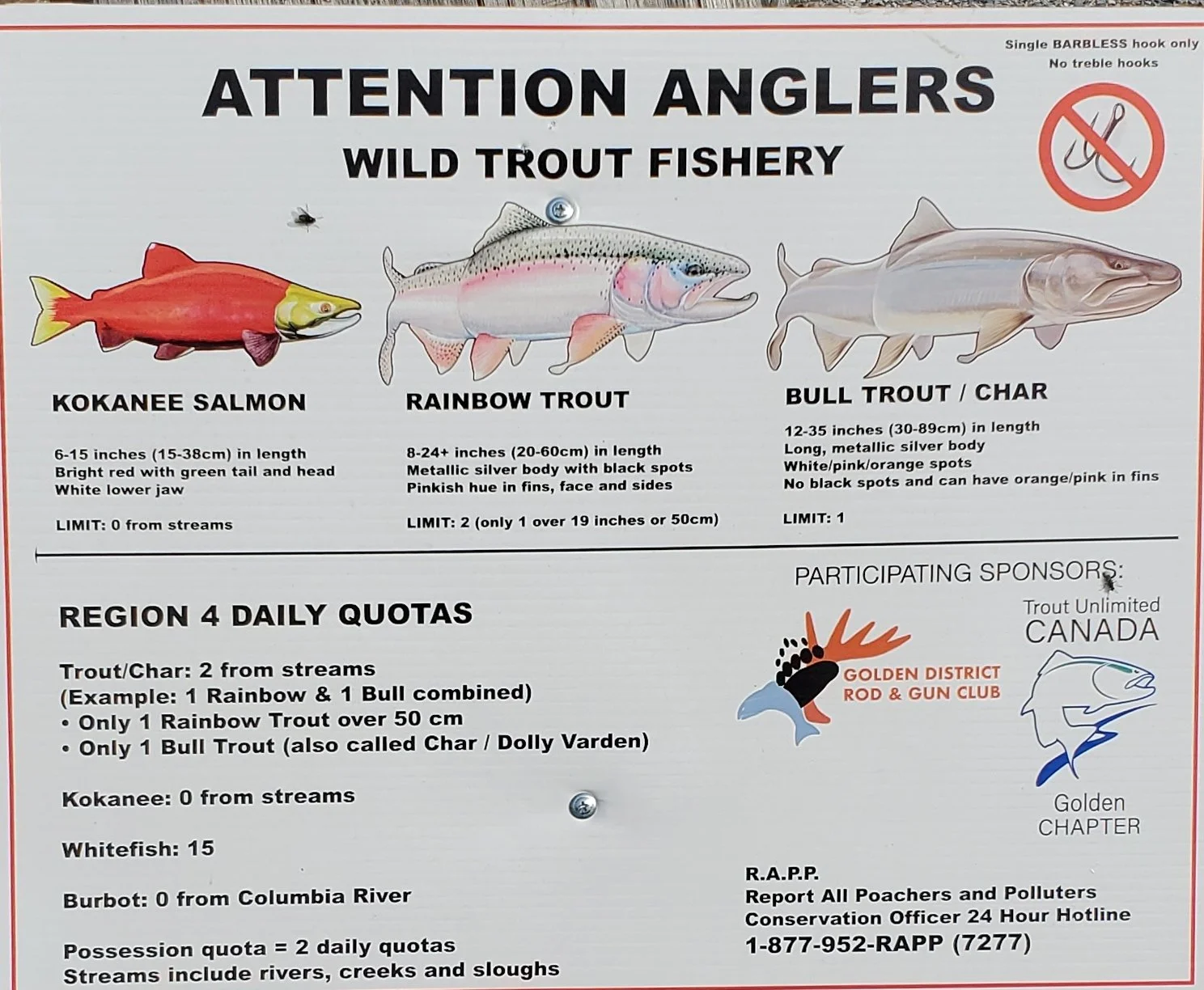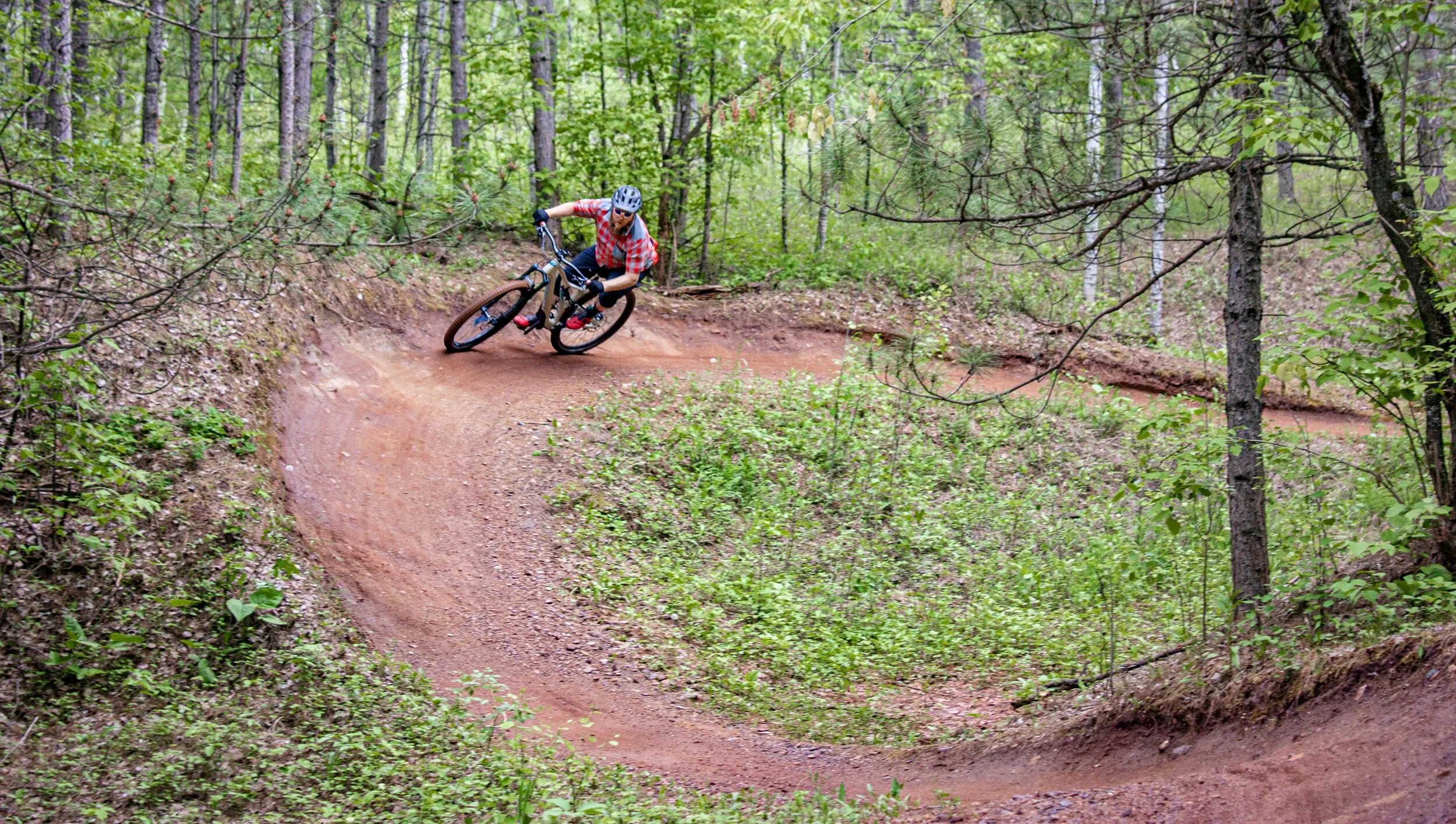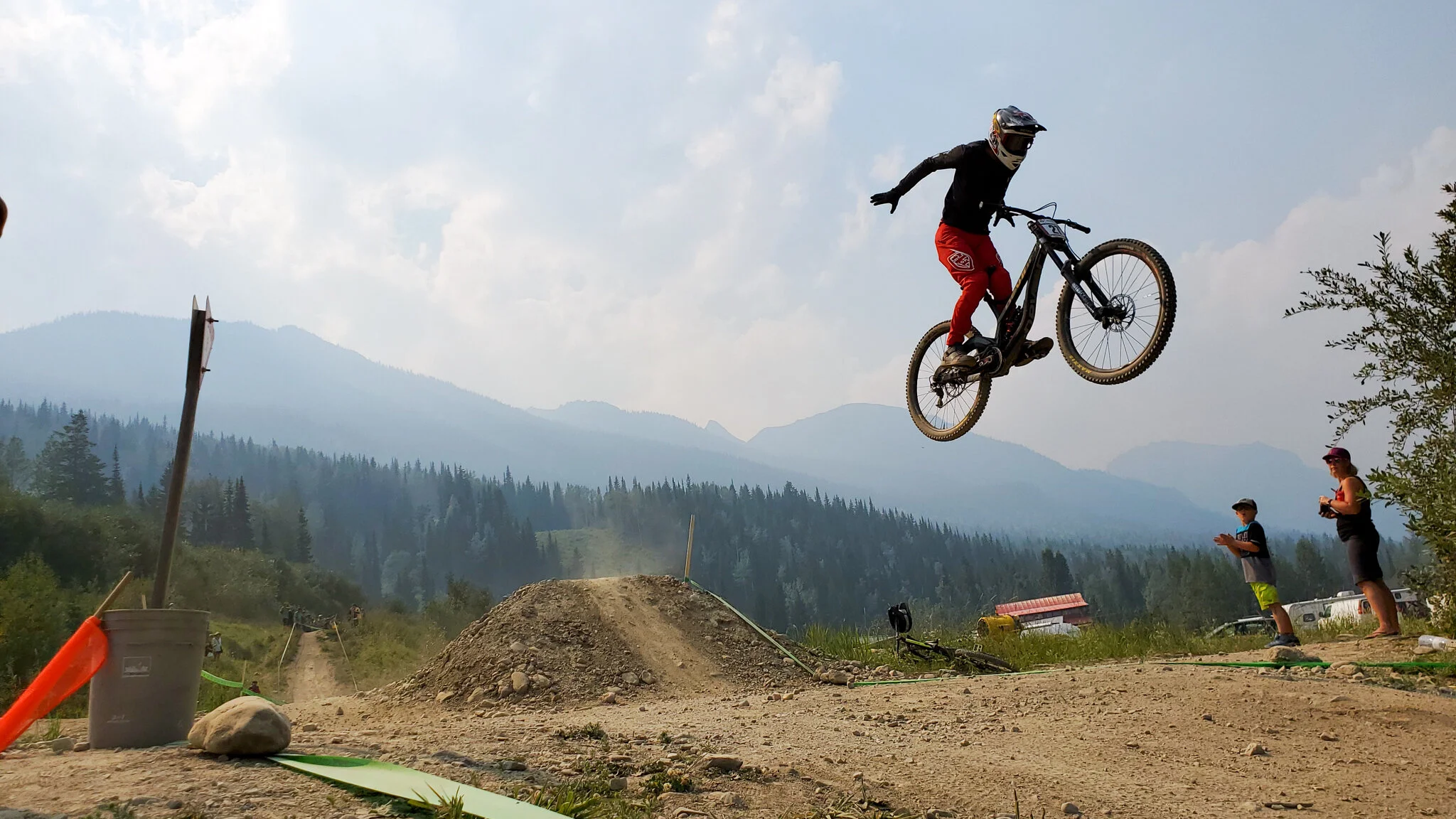Stopped on the high overhead bridge we peered down into the near-tropical blue channel where the creek was deepest, areas with lesser depth ran gin clear. For both of us, it was our first time at this quaint stretch of water, the idea was to familiarize ourselves with the stream. Shortly after stopping at the bridge, perhaps 500 a meter drive, is where we parked. Seeing that it was a weekday, the campground was empty and we shared the stream only with the resident eagles. Excellent.
Prior to slipping into our wading outfits we took a moment to gather all we could about the stream and our surroundings. The water level here fluctuates vastly with the seasons, cobble and rock banks clear of living vegetation spanned for tens of meters on either side of the now yielding flow. Small pools and rivulets isolated from the mainstream held many kokanee, they appeared dazed as they swam from one side to the other with nowhere else to go. (Kokanee are miniature versions of their ocean-going variant, sockeye salmon (both are Onchorynchus nerka.) Unlike the ocean-going sockeye, kokanee spend their entire lives in freshwater, but still adhere to the spawn-and-die lifestyle.) The kokanee moved like underwater cardinals bright red and beautiful, albeit lacking the tune of the eastern bird. I find the color of the kokanee quite special, just before death they display their brightest red, return to the current of a stream in search of a mate, and for the first and last time they will reproduce.
The variety of kokanee. The middle fish is barely hanging on and showing signs of rot, which is actually a fungal infection of the category Saprolignia.
The stream wove through the now-dry rock bed, bending, cascading, gurgling along towards the mighty Columbia. The lodgepole pine and black spruce sat away from the stream and composed the majority of the forest save for the odd poplar that brandished golden leaves, soon to drop with the nearing snowline. The day, in terms of weather, was perfect. Blue skies stretched up and down the Columbia Valley and crisp October air, when inhaled deeply, reminded you that you were alive, that the warmth you are now feeling would not last much longer, that this day should be enjoyed with a sense of gratitude before the cold, long winter arrives.
A beautiful and much appreciated October day.
Fishing holes were strewn about the stream, there was no shortage, riffles would fall into deep swirling pools where the water slowed and the fish could rest with little effort. “I’ll head down to this hole” I said pointing downstream with my rod “you take this one” then pointing perpendicular to the stream “After we give these some casts we can head up stream and leap-frog.” “Okay, sounds good.” Solange replied.
As I approached the tail water of the riffle the hundreds of kokanee became more clear, there was no way I wasn’t going to catch a fish. Perfect. I hoped Solange was having a similar experience up at her spot. As I had wished, I was unable to not catch a kokanee, on 15 casts I caught 13 kokanee. Their zombie-like state did not induce a fun fishing experience after the first few, so the ten others that followed were more of a nuisance than fun. I even tried to let them off the hook by giving them slack and ending the fight, but to no avail, they couldn’t shake the hook. It was even barbless.
One of the first kokanee, as I’m still fresh on catching them.
I crossed back over the stream and walked towards Solange, knowing that trying to talk from a distance was utterly hopeless around moving water. “Any luck?” I asked, “No, nothing at all.” she said. Her spot lacked any sign of the small kokanee, which wasn’t all that bad, considering it was more of a cheap thrill than a memorable engagement. We hadn’t come to catch kokanee anyways, we were after bull trout, which, funny enough, aren’t actually trout. They’re char. Bull trout are notorious for being the biggest baddest fish in the stream, weighing up to 14kg (32lbs) and as long as 103cm (40in) (Fishbase.de). Catching a bull trout would be a highlight to either of our fly fishing careers, especially Solange’s, as she is rather new to the addiction….er...sport.
A sign posted on a nearby stump to remind fisherpeople of their limits.
The riffle dropped more than the others we had seen and tailed out in a short, but deep pool and also featured a sizable eddy where many kokanee were holding. “Can you watch me cast? I’m not doing very well today.” Solange said “Yes, of course, we’ll getcha goin’” I replied. She pulls out ten meters of line and begins to cast. The cast is as she said, not the best, but a quick fix. “Your arm is rotating too much, remember the 10 to 2” I shouted from a distance, being sure to be clear of her back cast. She hears me and shortens the rotation on her cast. Bingo. Her line is now gently whipping to and fro with a soft whistle, perfect. She sends the fly to the far side of the riffle and swings down and into the pool below. “Nice cast!” I say, now closer to her. The line drifts through the pool with no connection. Damn. “Strip it in and give it another go” I say. She begins to strip in the line for another cast when her line stops “I think I’m on a rock” she says, to which I reply “Okay, I’ll get it”.
As I’m going to unhook her line from the rock her rod starts to quiver and I see a flash in the bottom of the pool. To our surprise, she connected with a fish, and a big one at that...at least bigger than the kokanee I’d been catching downstream. Her rod bends down and down, she’s now using both hands to keep her rod tip up, her reel giving off short quick whines as the fish on the other end refuses the otherworldly pull. Unfortunately, we had managed to lose our net just a couple of weeks prior, so as Solange is contending with this massive fish I am more or less of no use on the shore. I stood back, letting her dance the dance between fisherperson and aqueous partner, providing words of encouragement such as “Keep the rod tip up” “Don’t lose it” “Let the reel do the work”...Perhaps I sounded more like a coach. Oops. The one beneficial choice of words I sprayed out was “We don’t have a net, you’re going to have to walk it to shore.”. She began backing up over the uneven rocks, keeping the rod tip held high as the fish on the other end conceded to shallower waters. Spectacular. When the fatigued competitor was swimming in just a few inches of water, I made my move. Circling around into the deeper water I approached the fish from where it wanted to be and flicked it up onto the rocks. Solange had successfully landed a bull trout and her biggest fish.
Bystanders had come up during Solanges’ engagement to get a better view, once she had landed the fish they awed in its beauty and size and offered to take a picture. We gladly accepted, kneeling down and holding up the silvery and dotted predator. He snapped our picture. “Thank you!” we said excitedly and simultaneously, then trading a quick glance before we maneuvered to release the catch. The barbless hook slid from its mouth like an earring in a pierced ear, Solange then gently submerged the fish, moving it forward and back in the stream before it wriggled free and swam back with great composure.
Solange showing off her fresh catch.














